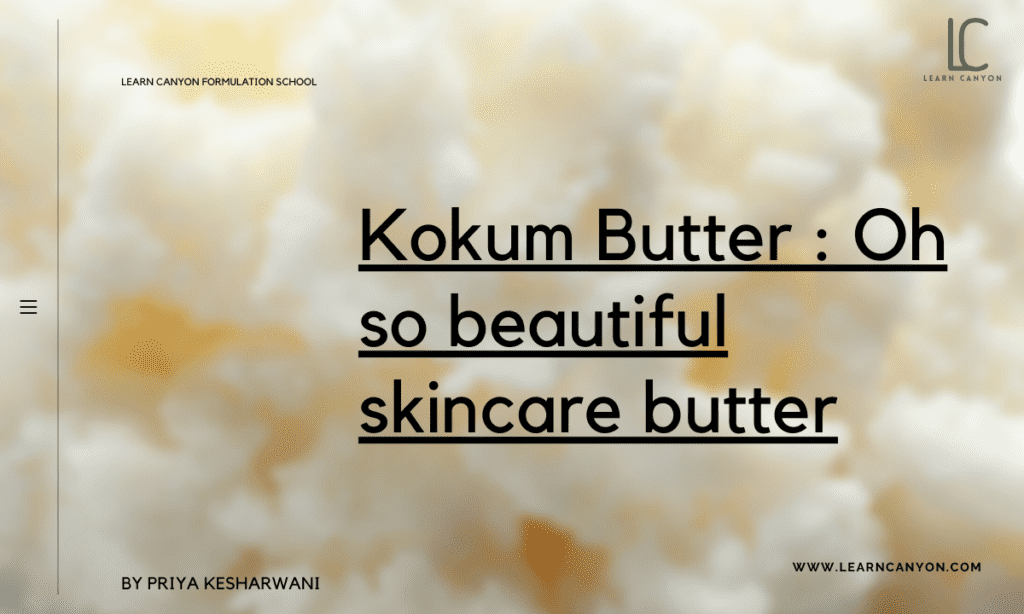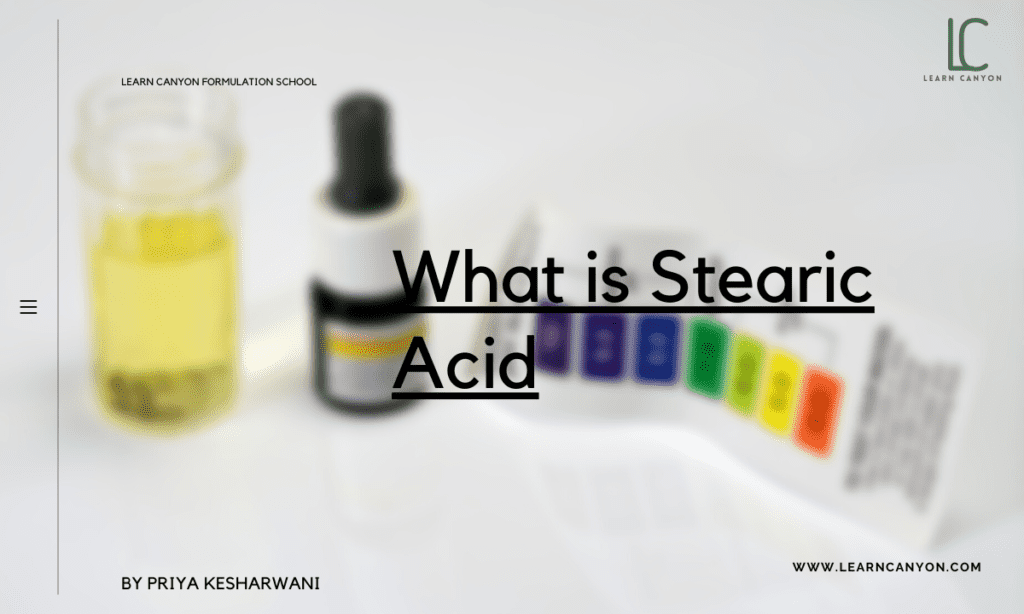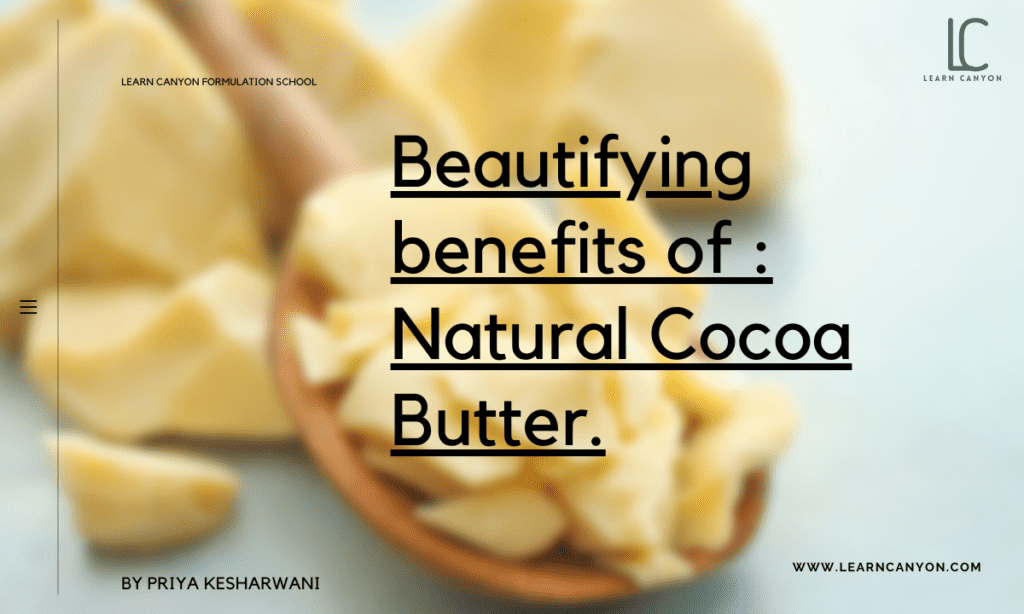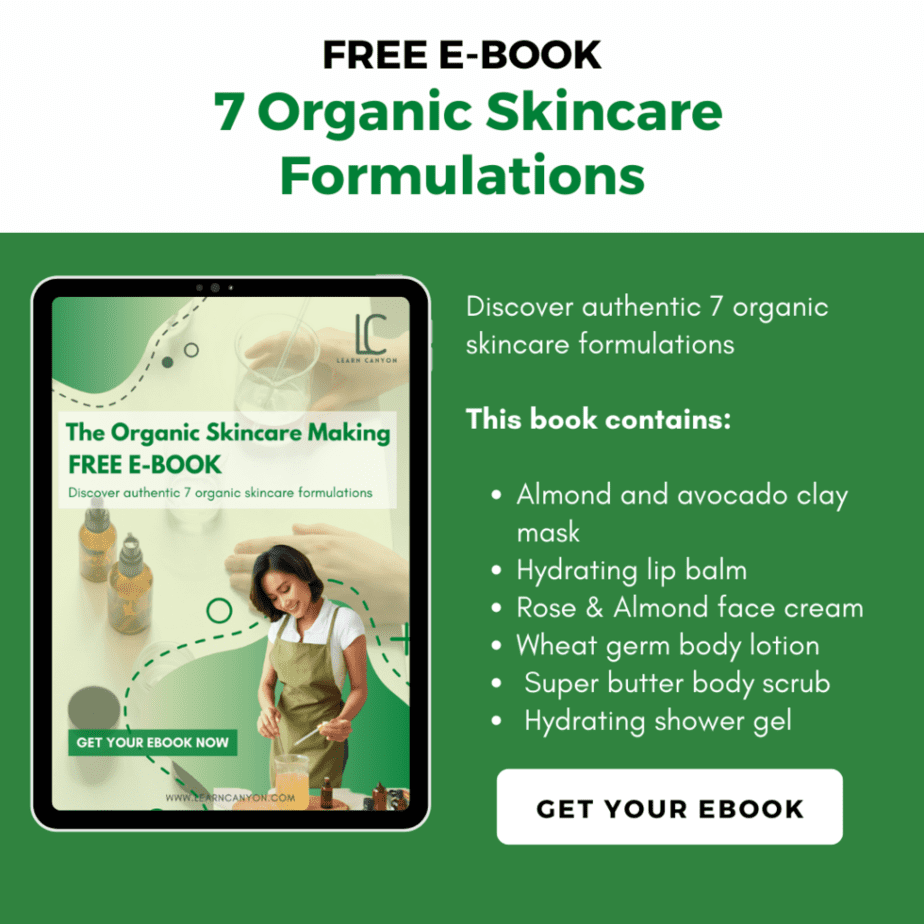
what is Stearic Acid

Why use This Little Acid In Your Skincare?
Have you ever seen the ingredient list of a moisturiser and wondered, “What is stearic acid, and why is it in this lotion?”
You might even wonder if you should be putting anything “acid” on your skin at all. You’re not alone; we get a lot of questions about ingredients, and stearic acid is one of the most prevalent. Its benefits, what it appears to be, and so on.
What Is Stearic acid?
So, let’s start with a definition of stearic acid. Stearic acid is a waxy, colourless molecule having a faint odour. Because it is soluble in oil but not in water, it floats. Because of its 18-carbon chain, stearic acid is often referred to as Octadecanoic Acid.
This essential saturated fatty acid is the primary component of both Cocoa and Shea butter. Stearic Acid is derived from the fatty parts of plants, making it ideal for natural formulations.
Stear is created from natural animal by-products and lipids obtained from the processing of meats, and its name derives from a Greek word that means “tallow.”
| What is it? | Stearic acid is an isolated fatty acid used in lotions, salves, body butters, and other products as a thickening and hardener. Butters such as cocoa and shea contain it naturally. |
|---|---|
| INCI | Stearic Acid |
| Appearance | Small white beads or pellets |
| Texture | Buttery consistency. |
| Recommended Usage | 1–25% |
| Solubility | Oil soluble |
| Melting point | 69.3°C (156.7°F) |
| Boiling point | 361 °C |
| pH | 6 |
| Aroma | Nothing special, maybe a smidgeon of fat. |
| Why do we include it in formulations? | Our products are stiffened by stearic acid. Lotions thicken dramatically when a small amount (1–4%) is added. Stearic acid thickens without the weight and waxiness of waxes when used in products like cleansing balms or emulsified sugar scrubs. |
| How to work with it? | Incorporate it into the hot oil phase. |
| Applications | Stearic acid is an emulsifier, emollient, and lubricant that softens the skin while also preventing items from separating. |
| Absorption rate | Slow to medium-paced |
| Strength | It's a powerful thickening that doesn't have the weight or tackiness of waxes. |
| Weaknesses | Easily available, cheap ingredients. |
| Substitution | Cetyl alcohol and cetearyl alcohol |
| How to store it? | Stored in a cool, dark and dry place. |
| Shelf life | The shelf life of stearic acid should be at least two years. |
Fast Facts
| Type of ingredient | Emollients, surfactants, and emulsifiers |
|---|---|
| Main benefits | Softens and smoothes the skin's surface while also aiding in the preservation of the skin's barrier. It also functions as a surfactant, while it is most commonly employed as an emulsifier to thicken and improve the texture of products. |
| Who should use it | Stearic acid is a well-tolerated substance that may be used by almost everyone, but it's especially beneficial for people who have sensitive or dry skin. |
| How often can you use it? | Stearic acid-containing products can be used at any time of day or night. |
| Works well with | Almost every ingredient, especially a lot of oils. To reduce the drying effects, it's often combined with more irritating activities. |
| Doesn't work with | There are no compounds with which stearic acid does not work well. |
| How to use | Added to your formulation during the oil phase. |
Mechanisms of action
Hardening and thickening agents like stearic acid are utilised in items like soap bars and candles. The presence of stearic acid in soap aids in the creation of a velvety lather when mixed with water; this property also makes it a must-have element in most shaving foams and creams.
The watered-down, runny feeling is reduced when the soap mixture is hardened into a solid. This is caused by surfactant action, which lowers the surface tension of a given oil; when the surface tension is lower, oil and water mix well and do not separate into layers of oil and water.
Stearic acid has occlusive qualities, which means it keeps the skin hydrated by preventing or delaying moisture loss from the skin’s surface.
Benefits of Stearic Acid for Skin
The several roles that Stearic Acid can play in our skincare products, including:
- Skin is softer as a result of the application of this product. Moisturising chemicals come in three forms: humectants, emollients, and occlusives. Stearic acid is an emollient, meaning it hydrates and smooths the skin.
- Stearic acid, on the other hand, does a bit more. It’s an essential component of the skin barrier, which is the skin’s outermost layer that keeps natural moisture in while keeping irritants out. Consider the skin cells in the barrier to be bricks; stearic acid (and other fatty acids), as well as cholesterol and ceramides, are the mortar that holds the bricks together to form a smooth, crack-free surface. As a result, stearic acid can help your skin barrier to be stronger.
- Because it enhances the skin barrier, stearic acid protects against water loss and even helps to lessen the effects of ageing.
- Fantastic for sensitive or irritated skin: Stearic acid is a good choice for those who have sensitive or irritated skin, and it can even aid with psoriasis flaking and inflammation.
- Assists in skin cleansing: From here on out, things become a little more interesting. “It helps oil-water and debris link together and be removed off the skin’s surface more quickly,” says stearic acid, which is why it’s featured in so many cleansers.
- It does not deplete the skin’s natural oils like other surfactants (cough, sulphates) do. Plus, you’ll get all of the moisturising properties at the same time, making it ideal for those looking for a gentle cleanser that won’t irritate or dry up already-damaged skin.
- Stabilizes products: According to Hu, it’s also responsible for the smooth, silky texture we all love, as well as stabilising and preventing the separation of final formulations.
Side Effects of Stearic Acid
Stearic acid is a safe, well-tolerated ingredient for all skin types, according to all of the experts we spoke with. Petrillo, on the other hand, emphasises that any substance might trigger an allergic reaction or allergy.
How to use it in formulation?
Stearic Acid can be used as a base for other ingredients in formulations, such as lubricants, emollients, and emulsifiers. During the oil phase, add it to your formulation.
Work well with other ingredient
Stearic Acid is compatible with practically all skincare chemicals, and it’s sometimes used in products with actives like Retinol to assist avoid dryness and irritation. It’s also recognised to be well-liked by the general public, with little negative reactions or side effects.




